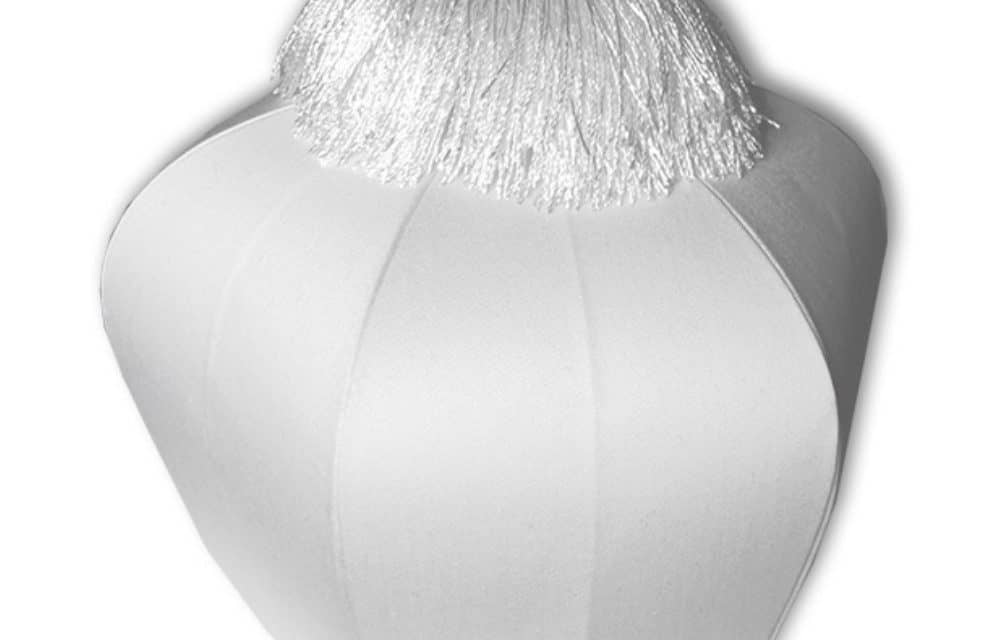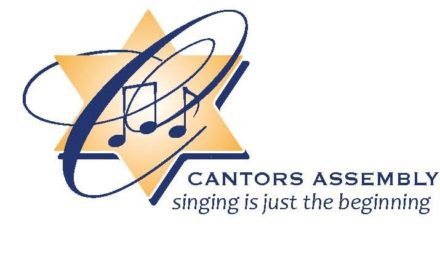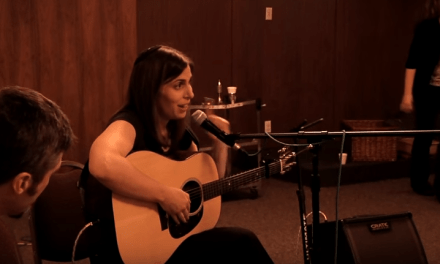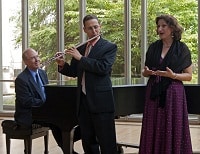Do we still need hazzanim at all?
While the sages had strong opinions on the subject—the answer being a forceful “yes”--for a small but increasing number of congregations, both large and small, the answer is a resounding “no.” Many communities, whether they want a cantor or not, are simply too small to support more than one clergy salary. They have little choice but to rely upon their rabbi and/or knowledgeable lay leaders to lead davening. They may still have a part-time hazzan on one or two Shabbatot per month, or bring in a professional cantor for the High Holy Days and for the chagim, but that’s about it.
Many rabbis and lay leaders of smaller congregations will say that they actually prefer this kind of arrangement, and proceed to downplay the role of the cantor. Their congregants, they argue, are extremely knowledgeable, and they are more than capable of leading all services and handling Torah reading duties on a week to week basis. Being led by “one of our own” gives the congregation a sense of greater agency and provides those who are less knowledgeable with more permission to participate in an engaged and meaningful way.
To be fair...maybe a rabbi with a nice voice IS enough for some congregations, as is relying upon lay people who know a lot of tunes and also have decent voices.
These are compelling arguments, to be sure, and in some cases may even be true. But do they represent objective reality, in point of fact, or are they just the ex post facto justifications for a decision over which leaders of smaller congregations have little or no control?
Let’s assume, for the moment, that these arguments are legitimate in the context of the small congregations.
But what about the case of larger congregations that choose not to have a cantor? To be fair, there is every reason to believe that this is a choice that may also make sense in some cases. Maybe a rabbi with a nice voice IS enough for some congregations, as is relying upon lay people who know a lot of tunes and also have decent voices. I’m not in any way suggesting that a congregation MUST have a hazzan in order to survive and thrive.
However (you knew that word was coming), by the same token, the same was once thought about rabbis. Indeed, in the early years of our country’s history, when rabbis were few and far between, it was far more likely that a synagogue would have a hazzan than a rabbi. Even now, there is a small but unmistakable trend of communities actively choosing to have a cantor as their sole spiritual leader.
But the purpose of this post is not to pit one type of clergy against the other. At the Cantors Assembly, we are keenly aware of the critical need to work in partnership with our rabbinic colleagues and take very seriously all reports that one of our members may have failed to live up to this obvious and necessary standard.
But the question still remains: knowing the importance of having strong spiritual and musical leadership that enhances every aspect of synagogue life, especially what happens in the sanctuary, why are congregations abandoning the very functionary whose presence has been considered crucial to the entire synagogue enterprise for centuries?
One answer is what we will call the “hyphenation” effect. As congregations of all sizes seek to gain any edge they can to get people in the door and keep them there, rabbis are viewed as having the more flexible skill set. Rabbis have come to be seen, whether rightly or wrongly, as the CEOs of their synagogues, able to take on an almost insane variety of tasks completely unrelated to their training. Whether they like it or not, they are thrust into roles requiring corporate-style leadership on the most intricate, critical business details of their synagogues, including finance, fundraising, marketing, and membership, in addition to their more common teaching and pastoral roles.
In a time when most Conservative communities are facing the prospects of shrinking membership and funds to sustain aging infrastructure, it only makes sense to rely on the steadying presence of a leader who can navigate through such choppy seas. Some rabbis are exceptionally good at these tasks and are leading their communities to impressive growth even in the face of stiff headwinds. And so, the thinking goes, if one rabbi is good, maybe two rabbis will be better.
But what do you lose when you make that decision, and what of the hazzan, about whom we continually wonder how he/she spends his time?
Some cantors still wax nostalgic for the days when cantorial artistry and creativity were held in such high esteem that Jews used to crowd around the open windows of synagogues already filled to capacity just to hear the sound of their favorite hazzan’s voice.
Cantors do, out of necessity, spend a fair amount of time (if they’re good at their jobs) immersed in music, but not because all they care about is the sound of their own voices. I would be lying if I didn’t admit, however, that there have always been, and still are, a small number of hazzanim who fit this description. They wax nostalgic for the days when cantorial artistry and creativity were held in such high esteem that Jews used to crowd around the open windows of synagogues already filled to capacity just to hear the sound of their favorite hazzan’s voice.
They forget that those hazzanim plied their trade during an era when opportunities to participate in the cultural life of the outside world were closed to Jews, when the chance to hear a gifted hazzan satisfied spiritual, artistic, cultural and entertainment purposes all at the same time. They forget that, like most golden ages, the “Golden Age” of hazzanut was only golden for a select few, and that most hazzanim were getting their hands dirty serving the “mundane” spiritual needs of Jewish communities rather than living in the limelight.
Thankfully, those days are long over, and virtually no avenue of human endeavor is closed to Jews anymore. We can not only share our talents as we wish, but when we want to be entertained or inspired, we can simply turn on the TV, log into Netflix on our phones or buy a ticket to a movie, concert, show or performance anywhere at any time. We no longer need our synagogues or a gifted hazzan to entertain or provide us with cultural fulfillment.
But here is what we DO still need a hazzan for:
It’s easy to get a congregation to sing. It’s not so easy to get them to sing week in and week out while constantly injecting new life into what is, for all intents and purposes, a fairly static text.
We provide musical interpretation of Jewish liturgy for those who can’t do it for themselves, but who still yearn for an authentic connection to the Source of meaning in their lives.
Unlike rabbis, whose 5+ years of training focus almost exclusively on learning how to interpret and teach Jewish texts—absolutely critical skills, by the way--cantors spend those same years of training learning how to mine the depths of our liturgy and how to make them come alive for a new generation of worshipers. We do, indeed, spend a lot of time poring over music, constantly walking a tightrope between serving those congregants who only feel connected when they hear the “old” songs, and the younger adults who yearn for more creativity in their davening.
This is a delicate balance that is difficult to achieve and requires constant study and effort. It’s easy to get a congregation to sing. It’s not so easy to get them to sing week in and week out while constantly injecting new life into what is, for all intents and purposes, a fairly static text. Empowering an entire congregation to participate in services requires strong, careful and studied leadership.
Admittedly, many cantors have, to a fault, adhered to the old model that emphasized cantorial prowess over congregational participation, but the new generation of cantors is keenly aware of the urgent need to stress congregational participation through training of lay daveners, creating alternative services, songleading in the schools, teaching congregants the meaning of the prayers and embracing new and exciting melodies during services.
Who will empower the next generation of daveners and Torah readers? Are we willing to entrust this sacred and most critical task to YouTube?
We carefully craft a musical identity for our shuls that pervades every aspect of synagogue life.
Cantors don’t simply lead services. We bring essential musical glue to everything we do, whether it’s singing with the children in early childhood, Hebrew school and beyond; leading songs and bentching during congregational meals; leading adult and children’s choirs; chanting at weddings, funerals, unveilings, britot milah; passing on our essential traditions of cantillation of Torah and Haftarah to b’nai mitzvah students; and, of course, encouraging, cajoling and empowering adults and children alike to step forward and become capable sh’lichei tzibbur and ba’alei kriah in their own rights.
The congregation, large or small, that forgoes the services of the hazzan loses the leadership of more than just a musical functionary. Who will empower the next generation of daveners and Torah readers? Who will provide the essential musical glue that binds us to the most authentic version of our past, secures our future as a people, and links all Jews together across time and space?
Are we willing to entrust this sacred and most critical task to YouTube?
The wise response should be an emphatic “no.”
Admittedly, I am highly biased on this point, but somebody has to take the responsibility for training the next generation to daven and chant our sacred texts--and I’m talking about adults as well as children. But the newly-hyphenated assistant rabbi, no matter how talented, is hardly going to be able to make this his/her top priority. And so, despite the valiant efforts of numerous institutions to stem this tide, we will likely see, not the end of, but an acceleration of one of the most worrying aspects of modern communal Jewish life: the demise of the educated Jew.
Call it scare mongering if you wish (the era in which we live is certainly rife with it), but if you look at your own congregations and ask yourself where, exactly, did most of your skilled daveners and Torah readers learn how to do what they do, I dare say in the overwhelming majority of cases, you will find a cantor among their most prized mentors. And so, when you remove the cantor from your payroll today, you will most likely assure that within a few years--or perhaps a bit longer if you’re lucky--your stock of competent Torah readers and daveners will run dangerously thin.
Without competent leadership to address this deficit, what then?
We eagerly engage with our clergy partners and lay leaders to ensure that our communities thrive.
As professional musicians, we are uniquely capable of enhancing fundraising efforts by producing concerts and cultural happenings that create buzz around our communities and attract new congregants.
Modern efforts to systematize the use of music in healing settings simply validate the crucial role that a hazzan has always been able to bring to the lives of congregants in need.
Though we always stand ready to work in harmony with our rabbinic partners, in times of emergency, absence or even as a matter of course, our status as clergy enables us to assume any pastoral role that is required, from counseling congregants in need to visiting elderly or ailing congregants and officiating at weddings, funerals and all other lifecycle events. We take the pressure off of our rabbinic partners by dividing up responsibilities to attend shiva minyanim. We build lasting relationships with our congregants, and shepherd families and individuals through all the joys and heartbreaks of life with compassion and sensitivity.
And that is to say nothing of the healing power of music that hazzanim can bring to ailing congregants. Science has long acknowledged the importance of music in bringing both comfort and healing to those who suffer from all manner of illness. Indeed, institutions like Johns Hopkins Center for Music and Medicine are on the cutting edge of making music an integral part of treating illness. And yet, these modern efforts to systematize the use of music in healing settings simply validate the crucial role that a hazzan has always been able to bring to the lives of congregants in need.
An increasing number of cantors are also being trained to fill hyphenated positions themselves, especially as Jewish educators to run schools, create experiential and life-long learning programs, and build engaging curricula on top of their cantorial duties.
We are educators, creating compelling learning opportunities for all ages.
Whether it involves working with children in the Hebrew school or adults who want to deepen their knowledge of Torah and liturgy, we are trained to teach on a wide variety of subjects, including liturgy, cantillation, Torah, current events, history, Israel, Holocaust and more. An increasing number of cantors are also being trained to fill hyphenated positions themselves, especially as Jewish educators to run schools, create experiential and life-long learning programs, and build engaging curricula on top of their cantorial duties.
And let’s not forget Torah reading and minyan.
Many hazzanim attend morning and evening minyan, and prepare Torah readers and ba’alei tefillah each week, as well as our own Torah readings (and if you don’t think this last task, in and of itself, can be a full-time job, you haven’t done much Torah reading yourself!).
And to do all these things often means being the first one in the building early in the morning and locking up at night after everyone else has gone. Being a cantor is definitely a full-time job and often much more!
Now, to be fair and balanced, not all cantors--or rabbis for that matter--are tasked with such an all-consuming role in their communities. Many, both male and female, have young children or ailing parents and relatives who may require the most attention at the same time minyanim and other important congregational activities are taking place.
We may find ourselves being more conscious of our clergy’s absence than their presence. We’re at our best, however, when we honor the family commitments or our clergy rather than seeing them as a deficit.
We may find ourselves being more conscious of our clergy’s absence than their presence. We’re at our best, however, when we honor the family commitments or our clergy rather than seeing them as a deficit. Our sages instinctively knew this when they mandated centuries ago that hazzanim be married and demonstrate a commitment to the obligations of family life.
All too often, however, when those very obligations come into inevitable conflict with some of the day to day obligations of communal life, this admonition from our sages has been interpreted as a liability rather than the obvious strength that it is...but that is a subject for another post!
And finally, we are professional pray-ers.
If we accept the idea that communal prayer is the unique thing that makes a synagogue different from a JCC, then we must ensure that our sanctuaries offer carefully crafted experiences that speak to congregants of all ages and skill levels. Unlike independent minyanim, and pop-up shuls which, by their very nature, are self-selecting groups of individuals who freely experiment with melodies, established synagogues must serve a broader audience.
Jewish prayer is hard enough. When young and old occupy the same pews every week, the task of the shaliach tzibbur becomes that much more complex and nuanced.
Jewish prayer is hard enough. When young and old occupy the same pews every week, the task of the shaliach tzibbur becomes that much more complex and nuanced.
As I asserted at the beginning of Part 1 of this series, I believe that prayer is the most elemental means of Jewish self-expression. The cantor’s purpose is to ensure that our communities achieve their highest spiritual potential, so that people will feel more connected to one another, to God and to their own best selves.
Coming soon in Part 3
But despite everything that I’ve already written about what cantors do all day, I’ve purposely left out what I believe to be the raison d’etre of the hazzan, and that is hiddur mitzvah, or beautification and enhancement of the mitzvah of prayer. In Part 3 of this series, I will explore how the concept of hiddur mitzvah led to the creation of the hazzan in the first place and why, despite all excellent reasoning to the contrary, we still need one.




